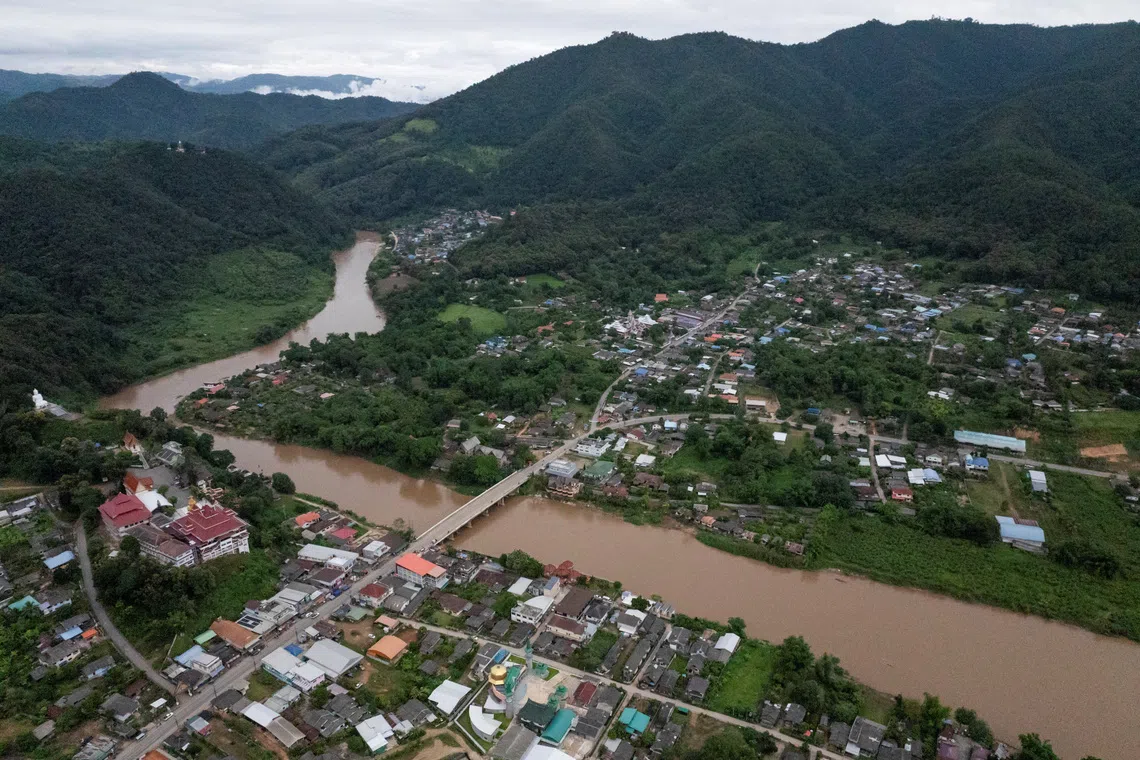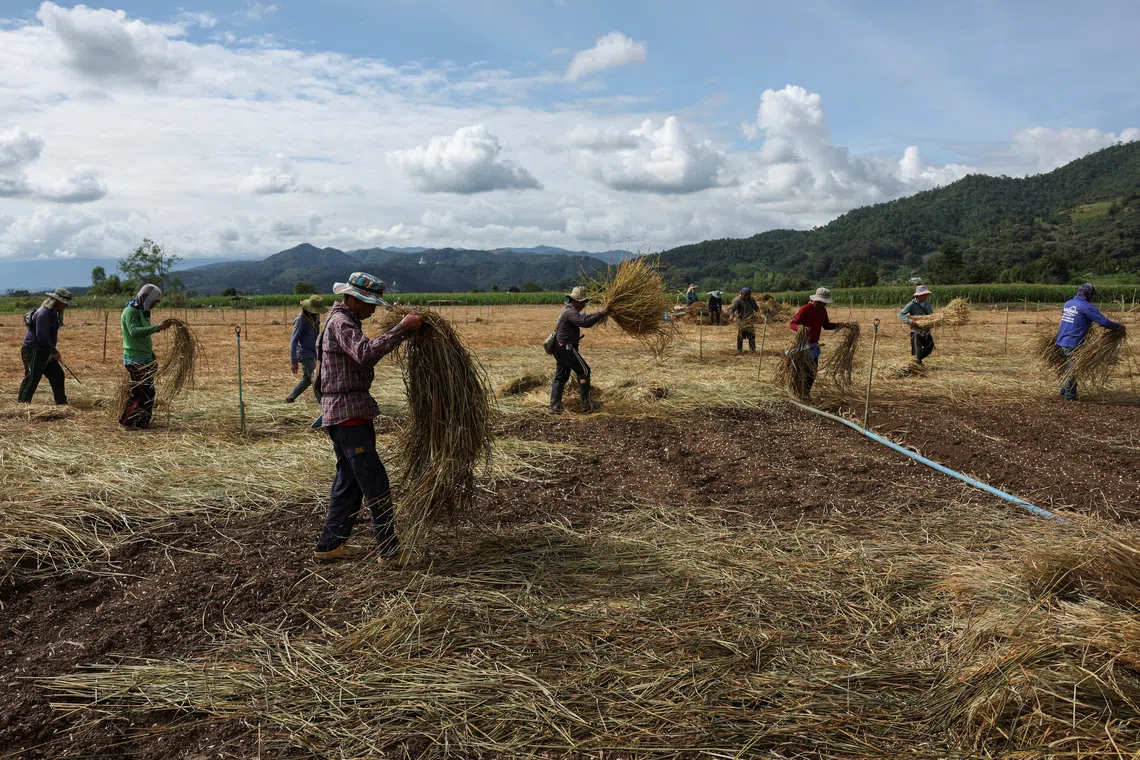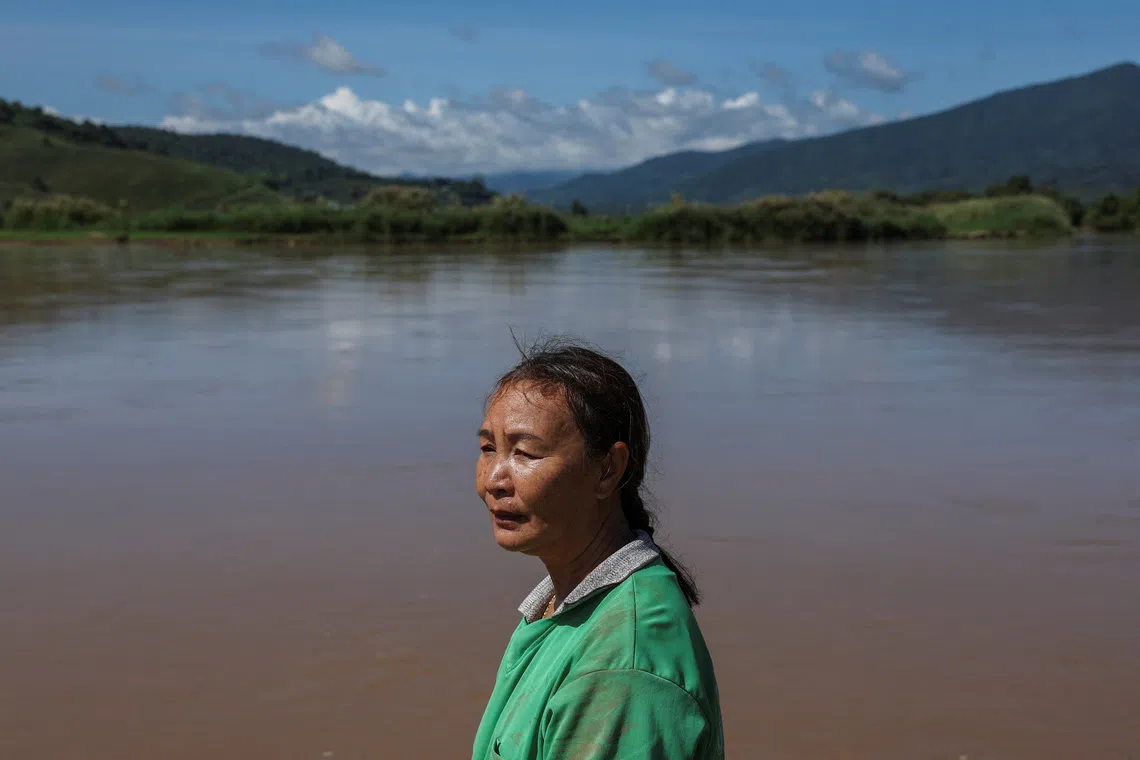Toxic mines put South-east Asia’s rivers and people at risk, says study
Sign up now: Get ST's newsletters delivered to your inbox

In April, the authorities warned residents to stop using the Kok River’s water because of concerns over contamination.
PHOTO: REUTERS
Follow topic:
THA TON, Thailand – For most of her life, 59-year-old farmer Tip Kamlue has irrigated her fields in northern Thailand with water from the Kok River, which flows down from neighbouring Myanmar before joining the Mekong River that cuts through South-east Asia.
But since April, after the authorities warned residents to stop using the Kok’s water because of concerns over contamination, Ms Tip has been using groundwater to grow pumpkins, garlic, sweet corn and okra.
“It’s like half of me has died,” she said, standing by her fields in Tha Ton sub-district and looking out at the river that she is now forced to shun.
Across mainland South-east Asia, more than 2,400 mines – many of them illegal and unregulated – could be releasing deadly chemicals such as cyanide and mercury into river water, according to research from the US-based Stimson Center think-tank released on Nov 24.
“The scale is something that’s striking to me,” said Mr Brian Eyler, senior fellow at Stimson, pointing to scores of tributaries of major rivers, such as the Mekong, the Salween and the Irrawaddy, that are probably highly contaminated.
The Stimson report marks the first comprehensive study of potentially polluting mines in mainland South-east Asia.
Researchers analysed satellite imagery to identify mining activity, including 366 alluvial mining sites, 359 heap leach sites and 77 rare earth mines draining into the Mekong basin.
Most alluvial mining sites are gold mines, though some also extract tin and silver. Heap leach mining sites include those for gold, nickel, copper and manganese extraction.
The Mekong is Asia’s third-largest river and supports the livelihoods of more than 70 million people as well as the global export of farm and fisheries products. It was previously perceived to be a clean river system, Mr Eyler said.
“Because so much of the Mekong Basin is essentially ungoverned by national laws and sensible regulations, the basin is unfortunately ripe for this kind of unregulated activity to occur at a high level of intensity and the huge scale that our data reveals,” he said.
The toxic chemicals released through unregulated rare earths mining include ammonium sulphate, sodium cyanide and mercury, which are used for two different types of gold mining, according to Stimson researchers.
That exposes not only the millions of people who live along the Mekong in South-east Asia to health risks, but also consumers elsewhere.
“There is not a major supermarket in the US that doesn’t have products from the Mekong Basin, including shrimp, rice and fish,” Mr Eyler said.
China-backed mining
The emergence of new China-backed rare earth mines in eastern Myanmar, not far from the mountainous border with Thailand, initially set off concerns among researchers about the danger of downstream pollution along the Kok River, including areas such as Tha Ton.
The contamination pattern in samples from the Kok River shows the presence of arsenic – linked to rare earth and gold mining – alongside heavy rare earths such as dysprosium and terbium, said Dr Tanapon Phenrat of Thailand Science Research and Innovation, a Thai government research agency.
“It has only been two years since the rise of rare earth and gold mining in Myanmar at the Kok River’s source,” said Dr Tanapon, who conducted testing of the waters in 2025 and warned of a sharp rise in contamination levels unless mining is stopped. He was not involved in the Stimson study.

Farmers covering garlic beds with straw in a field near the Kok River, where they irrigate the crops with groundwater instead of the Kok's water.
PHOTO: REUTERS
Myanmar, which erupted in conflict after the military seized power in 2021, is one of the world’s largest producers of heavy rare earths, critical minerals infused into magnets that power wind turbines, electric vehicles and defence systems.
From mining sites in Myanmar, the raw material is transported for processing to China, which has a near-monopoly over production of these vital magnets, with Beijing deploying rare earths as leverage in its tariff war with the US.
Mines across Myanmar and Laos use in-situ leaching for rare earth elements that was initially developed within China, according to Stimson’s Mr Eyler.
“In general, Chinese nationals work on these mines as managers and technical experts,” he said.
In response to questions from Reuters, China’s Foreign Ministry said it was not aware of the situation.
“The Chinese side has consistently required overseas Chinese enterprises to conduct their production and business operations in accordance with local laws and regulations, and to adopt stringent measures to protect the environment,” it said.
The Thai government has established three new task forces to coordinate international cooperation, monitor the mines’ health impacts, and secure alternative supplies for communities along the Kok, Sai, Mekong and Salween rivers, Deputy Prime Minister Suchart Chomklin said.
In northern Tha Ton, signs still hang on a bridge over the Kok River, calling for the authorities to shut down the rare earths mines upriver, and farmers such as Ms Tip are desperate for an intervention.

Ms Tip Kamlue, 59, a Shan farmer in Tha Ton sub-district, irrigates her crops with groundwater instead of the Kok River's water.
PHOTO: REUTERS
“I just want the Kok River to be the way it used to be – where we could eat from it, bathe in it, play in it and use it for farming,” she said.
“I hope someone will help make that happen.” REUTERS

